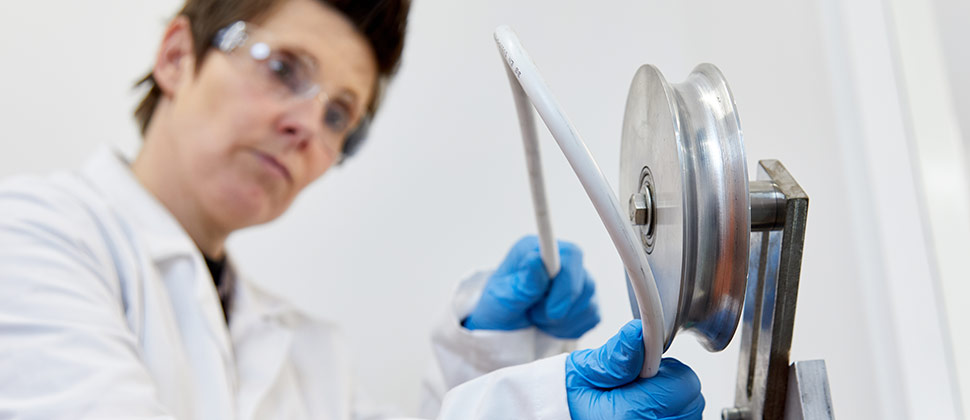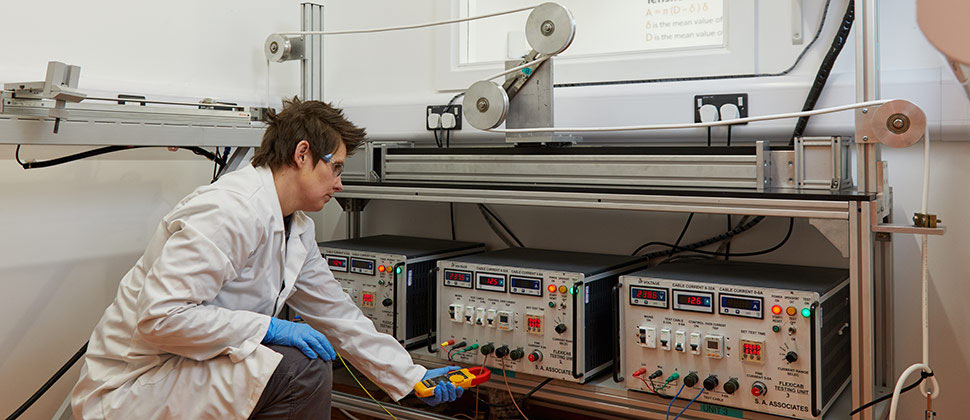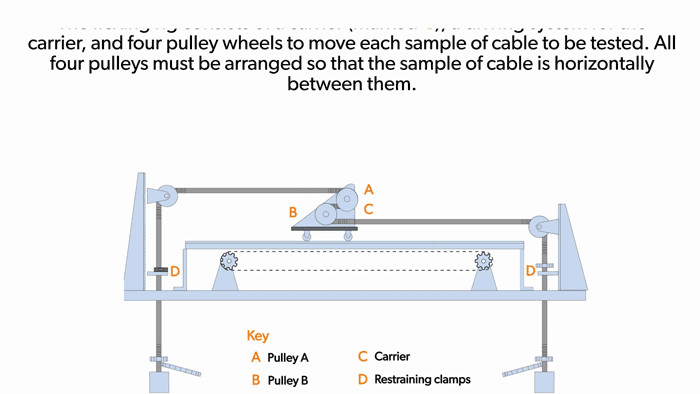Mechanical Tests for Flexible Cables - Two Pulley Flex Testing
The current to be applied is determined by the standard for each particular cable. The mechanical test for flexible cable procedure is applied to multicore thermoplastic cables that have a conductor with a cross-sectional area of less than 2.5mm2, and multicore cross-linked cables with a cross-sectional are of less than 4mm2. The individual cable standards will determine if this test is applicable.
During the test a cable sample of 5 meters in length is wound around a set of two metal pulleys mounted on a carriage. The carriage traverses back and forth across rails, whilst the cable is under load. Weights are attached to the ends of the cable to add further stress and simulate a working condition. The size of the pulleys, the weights attached and the current loading are determined in the standard and vary according to cable size.

For the cable to meet the standard requirements it must continue to function without electrical failure for 30,000 continuous cycles.
The flexing rig consists of a carrier (marked C), a driving system for the carrier, and four pulley wheels to move each sample of cable to be tested. The carrier supports two pulley wheels of the same diameter. The two fixed pulleys at either end of the apparatus may be of a different diameter from the pulley wheels (marked A and B) but all four pulleys must be arranged so that the sample of cable is horizontally between them.
The cable flexibility test sees the carrier makes cycles of forward and backwards movements over a distance of 1m at a constant speed of approximately 0.33 metres per second between each reversal of the direction of movement.
The diameter of the pulleys and the weights attached for each cable type and size are determined by the standard, BS EN 50396. For the sample to pass this test, the test rig must cycle across the cable back and forth 30,000 times without any electrical failure.

There may also be subsequent tests applied to the cable which are determined by the relevant cable standard, for example BS EN 50525 calls for the individual cores to be stripped from the cable, submersed in the water bath at 20°C and Voltage tested at 2000v for 15 Minutes.
For more information on whether this test is applicable to the cables you use, please speak to the experts in The Cable Lab.
Cable Sizing Calculator
Supporting Low Voltage cable sizing to BS and IEC standards with our easy-to-use calculator
Try it now
Custom Cable Design
Tailoring cables to meet bespoke requirements of performance or environmental challenges when off-the-shelf options are unavailable.
Read moreCPD Cable Training
Expert cable tuition from our experts with CPD-certified cable training and tailored cable learning programmes
Courses